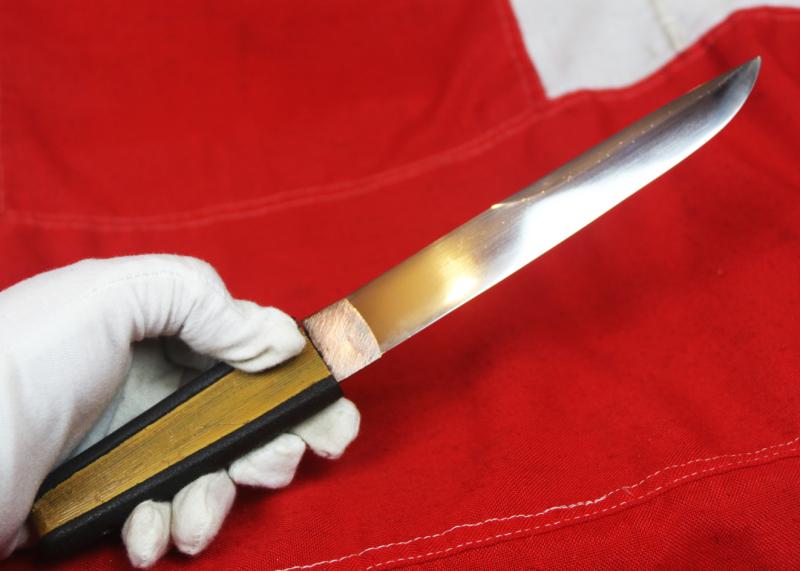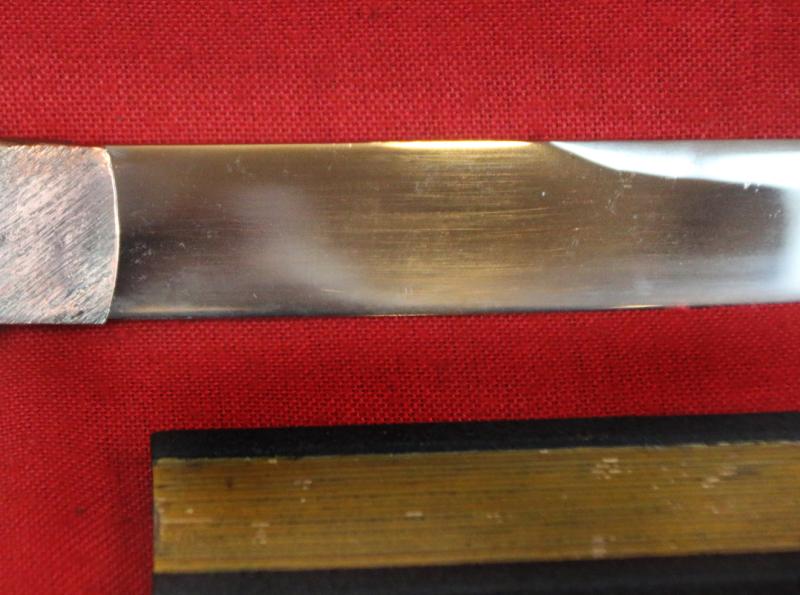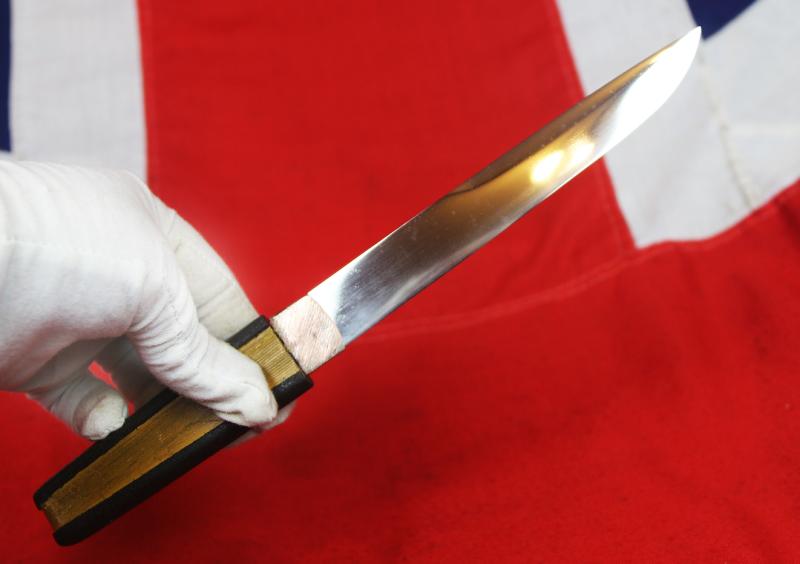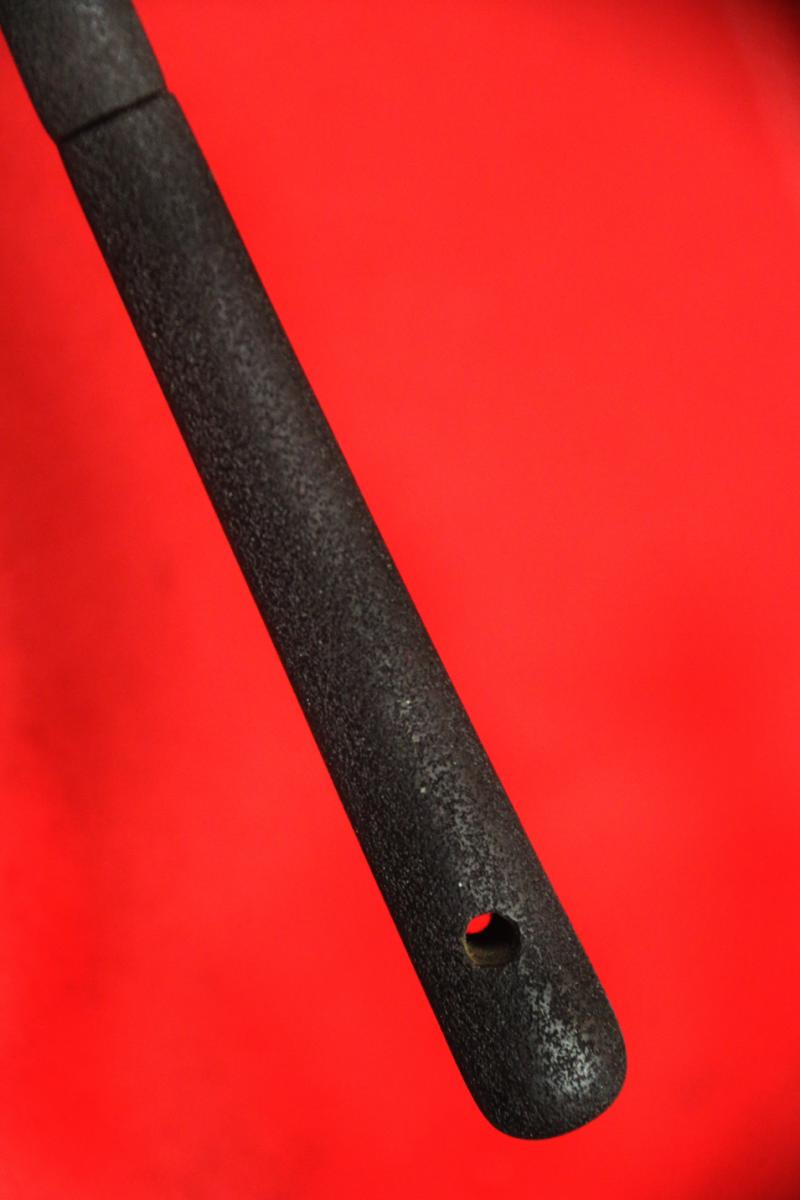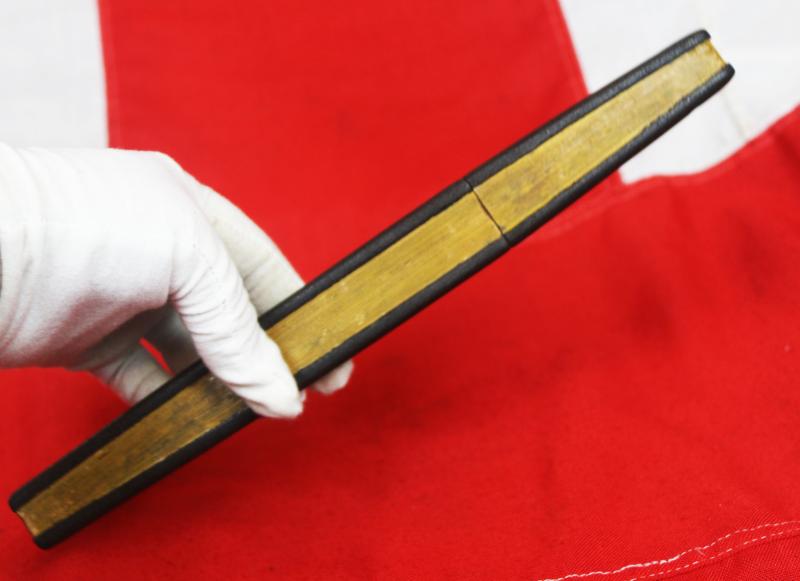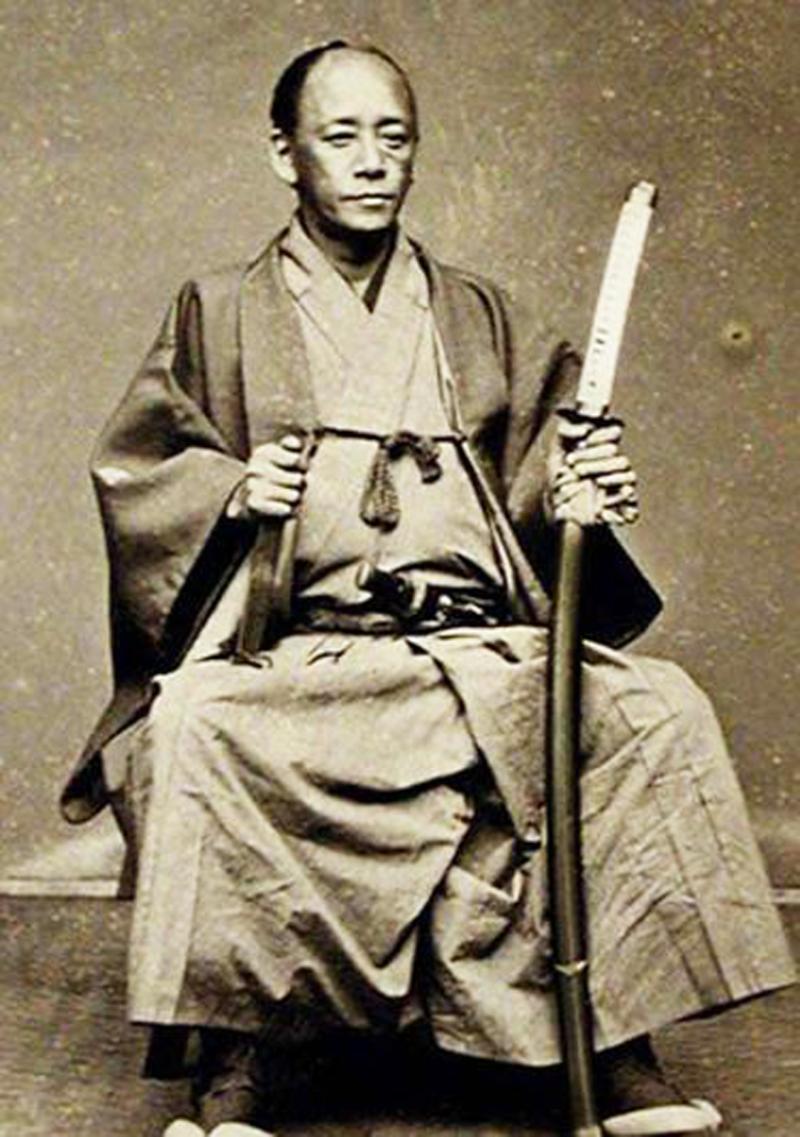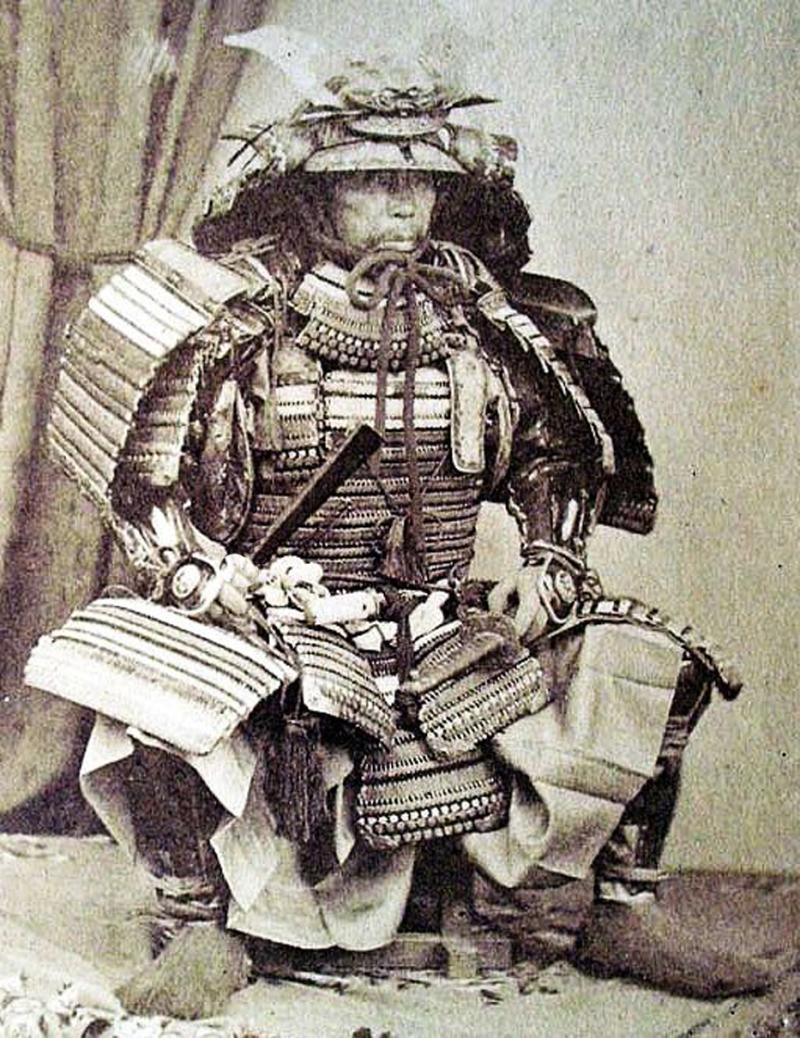A Superb, Original, Antique Japanese Shinshinto Period, 19th Century, Samurai's, Secret, Hidden Fan-Dagger, A Kanmuri-Otoshi Form Kakushi Ken
A fantastic original antique samurai conversation piece, a samurai tanto {dagger} disguised as a folded fan, that the blade is concealed within. A wide and very attractive kanmuri-otoshi form kakushi ken, with clip back return false edge, overall bright polish and just the faintest traces of miniscule old age pitting. Edo period secret bladed tanto,19th century, with carved wood and bi-colour urushi lacquered fittings, in ishime black and golden yellow, beautifully simulated to look like a traditional Japanese folded fan.
A photo in the gallery from Edo Japan of a seated high ranking samurai holding his tachi and war fan. Another samurai standing also with fan and daisho through his obi. Samurai sometimes disguised their blades as inoffensive items, such as cleverly made walking sticks or other common objects such as fans. Their ancestors, the classical warriors, overlooked nothing which could be used as a weapon. Also, deprived of their swords by law in the Meji era, late 19th century samurai had to rely even more on their own ingenuity and resourcefulness for protection against thieves, hoodlums, bandits and intrigue. The blade nakago sealed in place, so there was no telltale visible mekugi blade affixing peg.
A Japanese war fan is a fan designed for use in warfare. Several types of war fans were used by the samurai class of feudal Japan and each had a different look and purpose. One particularly famous legend involving war fans concerns a direct confrontation between Takeda Shingen and Uesugi Kenshin at the fourth battle of Kawanakajima. Kenshin burst into Shingen's command tent on horseback, having broken through his entire army, and attacked; his sword was deflected by Shingen's war fan. It is not clear whether Shingen parried with a tessen, a dansen uchiwa, or some other form of fan. Nevertheless, it was quite rare for commanders to fight directly, and especially for a general to defend himself so effectively when taken so off-guard.
Minamoto no Yoshitsune is said to have defeated the great warrior monk Saito Musashibo Benkei with a tessen.
Araki Murashige is said to have used a tessen to save his life when the great warlord Oda Nobunaga sought to assassinate him. Araki was invited before Nobunaga, and was stripped of his swords at the entrance to the mansion, as was customary. When he performed the customary bowing at the threshold, Nobunaga intended to have the room's sliding doors slammed shut onto Araki's neck, killing him. However, Araki supposedly placed his tessen in the grooves in the floor, blocking the doors from closing. Types of Japanese war fans;
Gunsen were folding fans used by the average warriors to cool themselves off. They were made of wood, bronze, brass or a similar metal for the inner spokes, and often used thin iron or other metals for the outer spokes or cover, making them lightweight but strong. Warriors would hang their fans from a variety of places, most typically from the belt or the breastplate, though the latter often impeded the use of a sword or a bow.
Tessen were folding fans with outer spokes made of heavy plates of iron which were designed to look like normal, harmless folding fans or solid clubs shaped to look like a closed fan. Samurai could take these to places where swords or other overt weapons were not allowed, and some swordsmanship schools included training in the use of the tessen as a weapon. The tessen was also used for fending off knives and darts, as a throwing weapon, and as an aid in swimming.
Gunbai (Gumbai), Gunpai (Gumpai) or dansen uchiwa were large solid open fans that could be solid iron, metal with wooden core, or solid wood, which were carried by high-ranking officers. They were supposedly used to ward off arrows, as a sunshade, and to signal to troops.
12 inches long overall. approx 7.5 inch blade. The black ishime lacquer is near pristine, the golden yellow urushi lacquer has some natural, dark, handling age staining.
Code: 25529
1320.00 GBP



